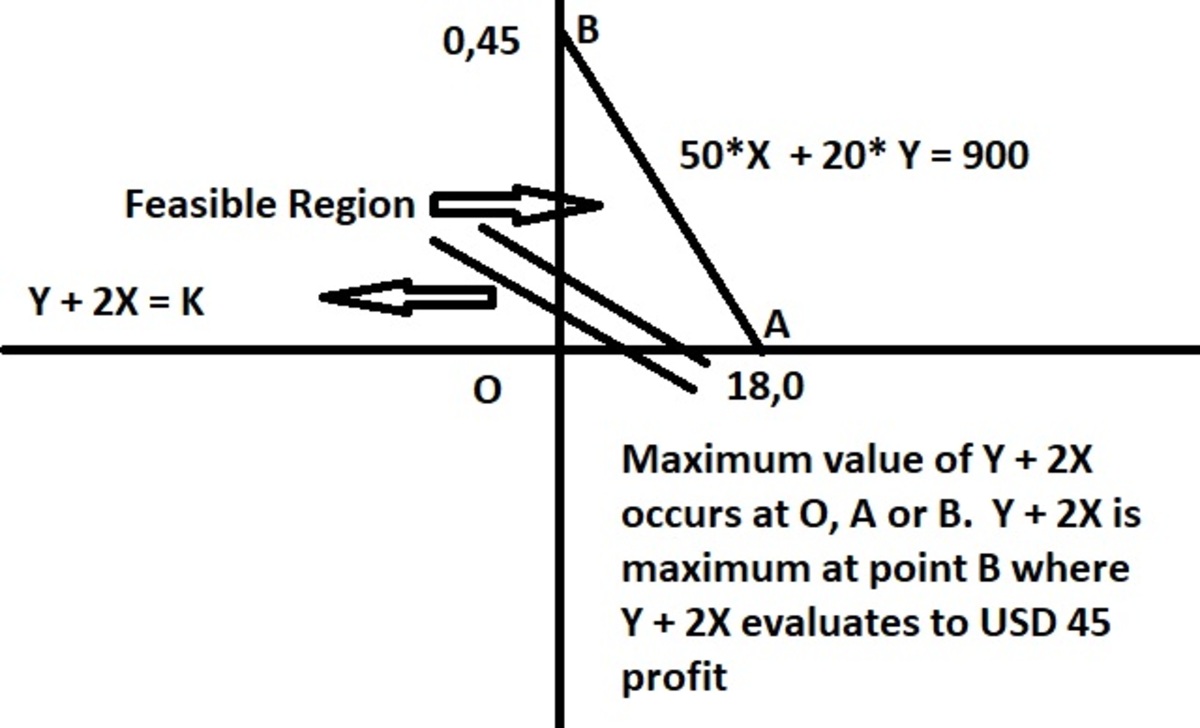How much should this farmer produce ?.
A farmer owns 1000 sqmetres of farm land. He wishes to produce both Potatoes and tomatoes. He can produce potatoes at the rate of 1kg per 50 sq metres of farm land , tomatoes at the rate of 1 kg/20 sq metres of farm land. After they are produced Tomatoes yield a profit of USD 1 per kg , whereas potatoes yield a profit of USD 2 per kg.
In order to maximize his profits How many Kgs of Potatoes and Tomatoes does the farmer have to cultivate ?.
You can assume that the farmer can use a maximum of 90 percent of his farm land for cultivation.
This section requires Javascript.
You are seeing this because something didn't load right. We suggest you, (a) try
refreshing the page, (b) enabling javascript if it is disabled on your browser and,
finally, (c)
loading the
non-javascript version of this page
. We're sorry about the hassle.

Since the farmer gets higher profit planting tomato per m 2 of land, he obviously plants all land available with tomato. That is to produce 1 0 0 0 × 9 0 % × 0 . 0 5 = 4 5 kg of tomato and 0 kg of potato.